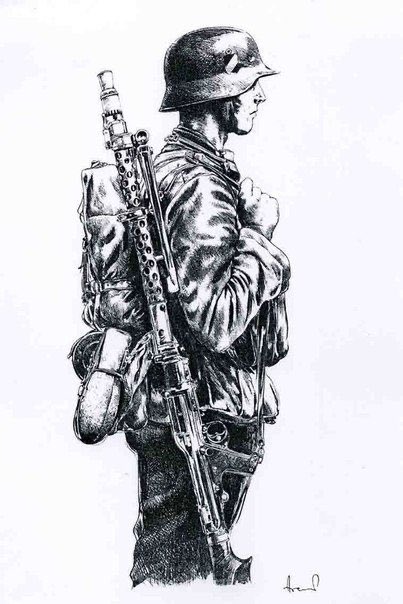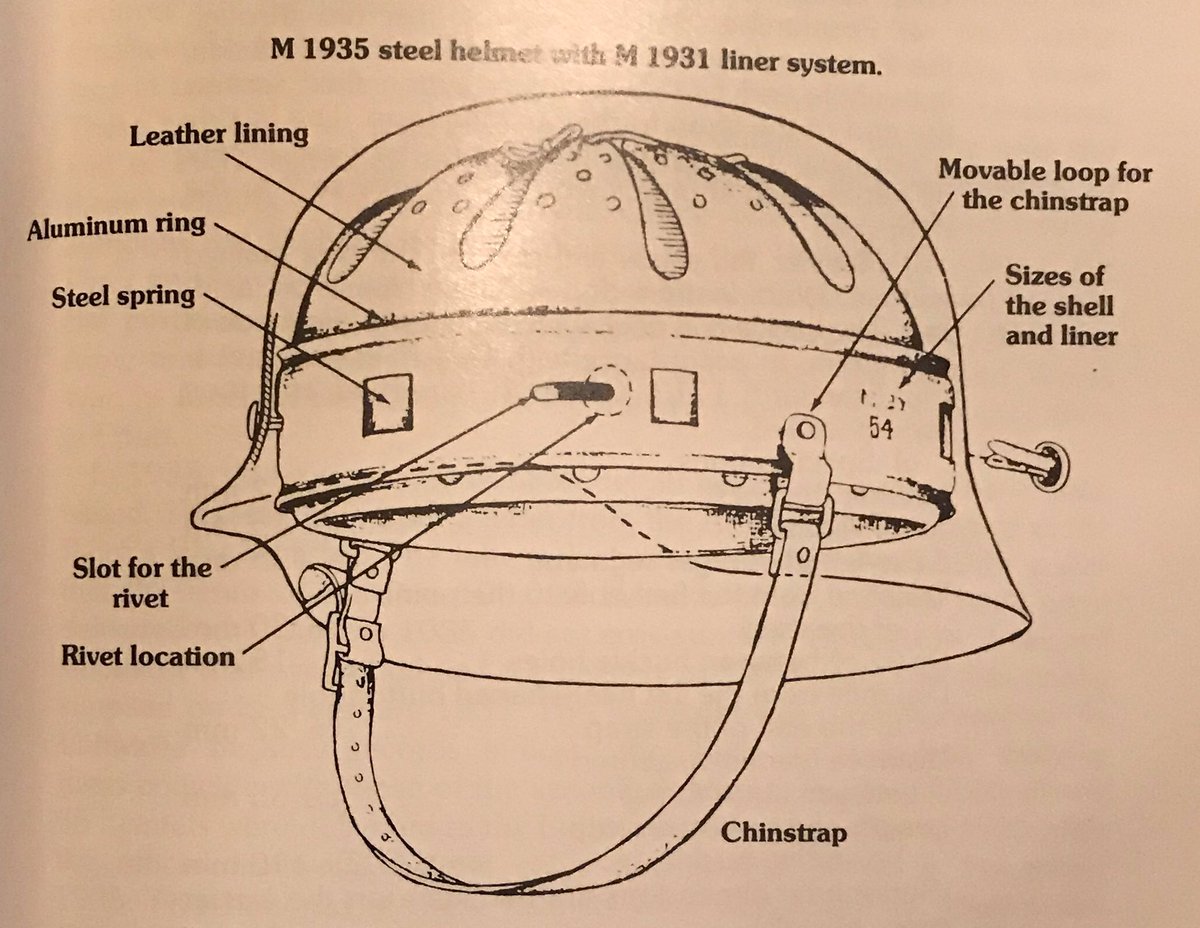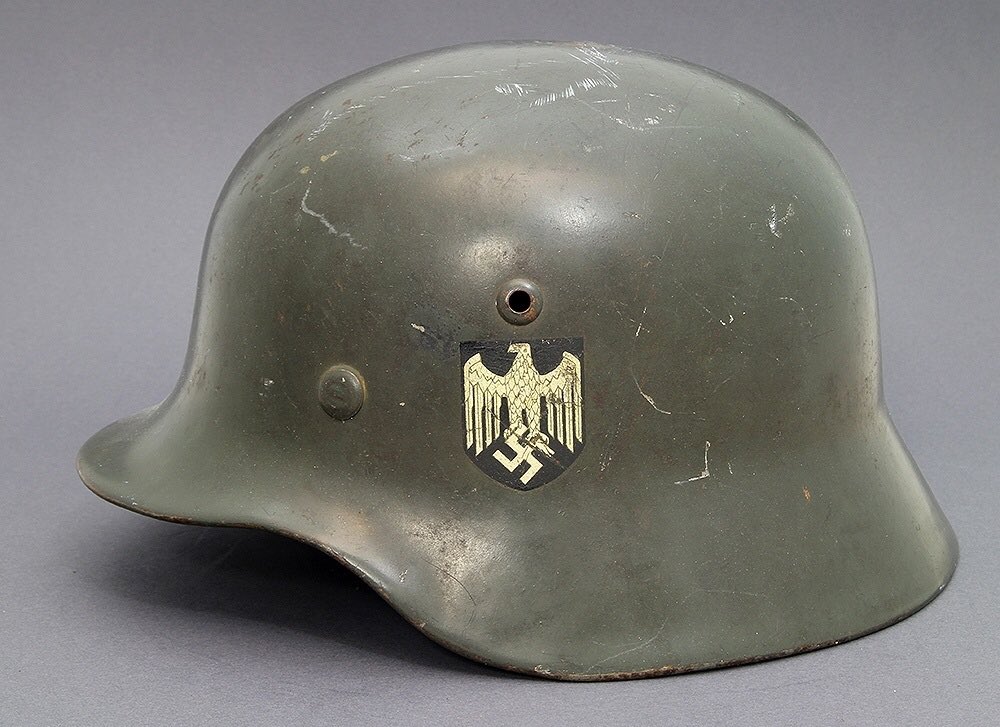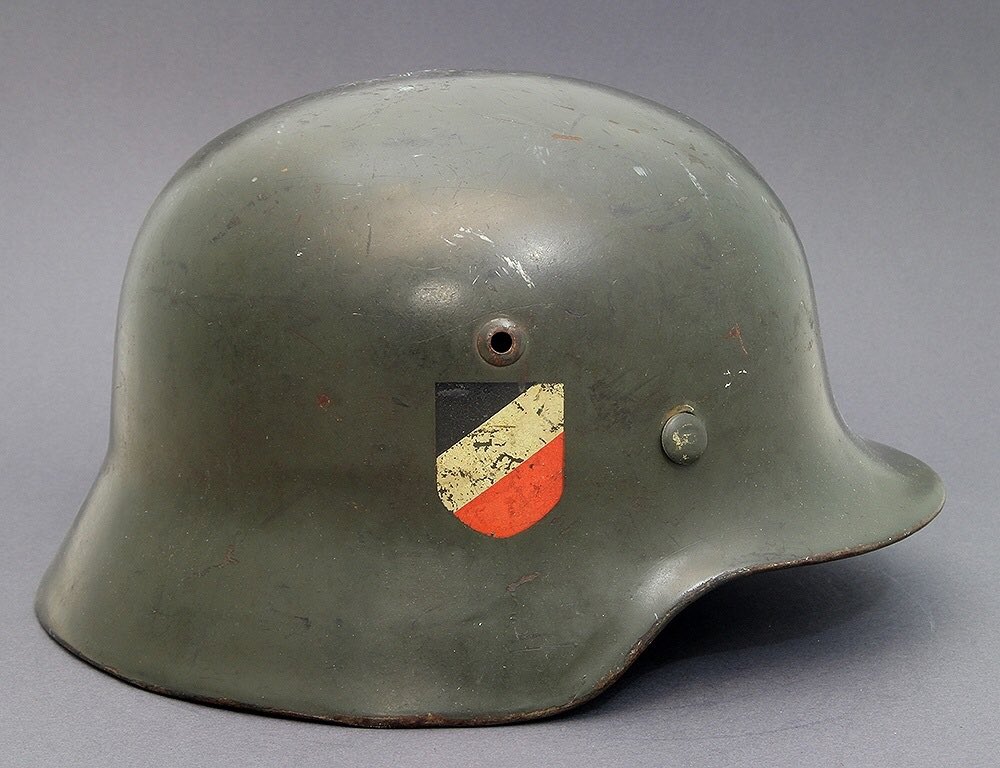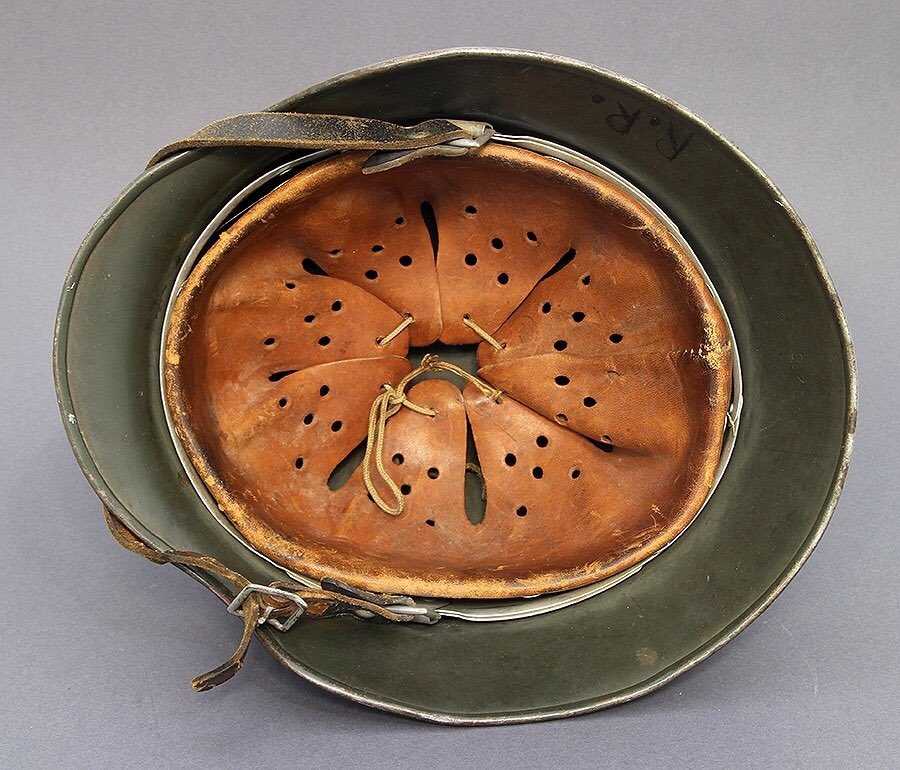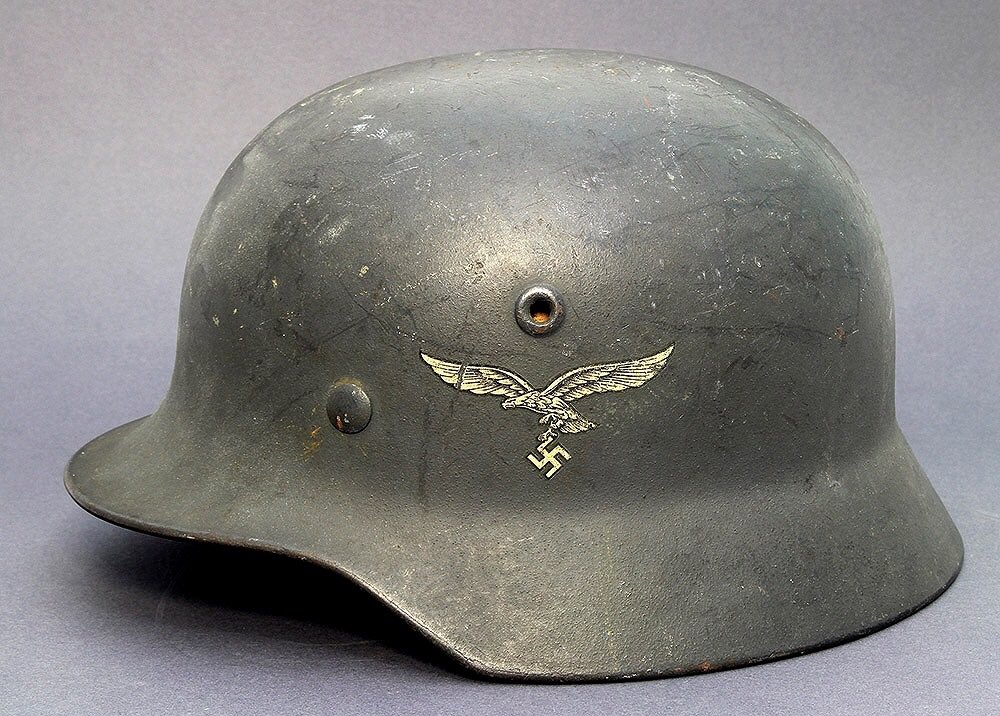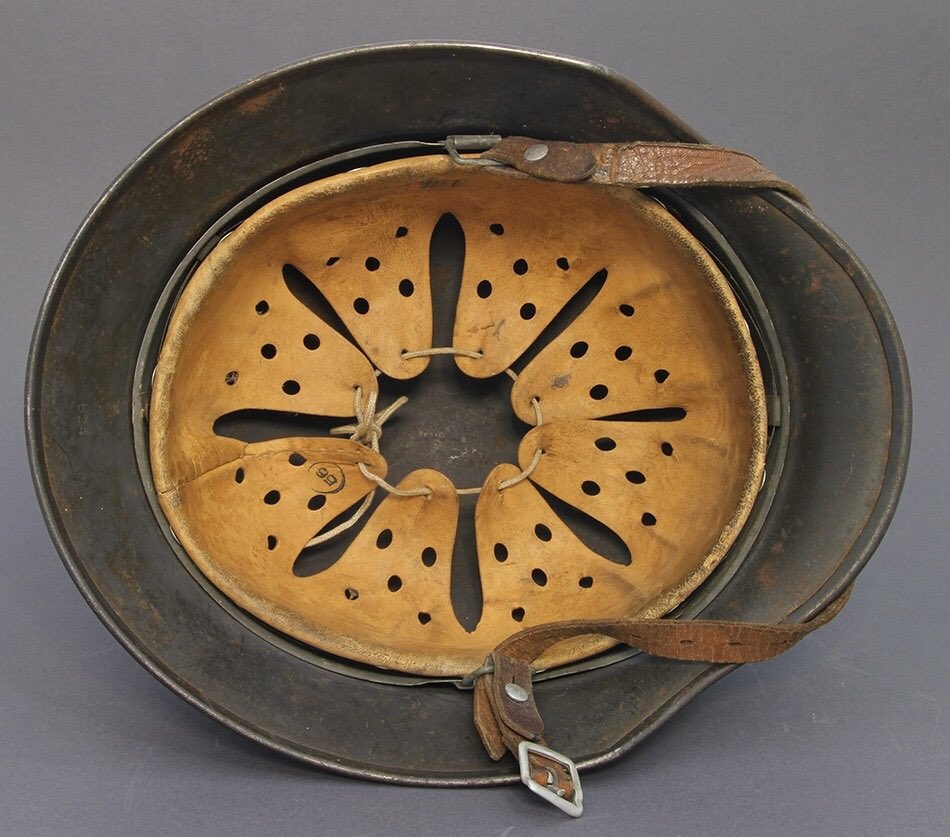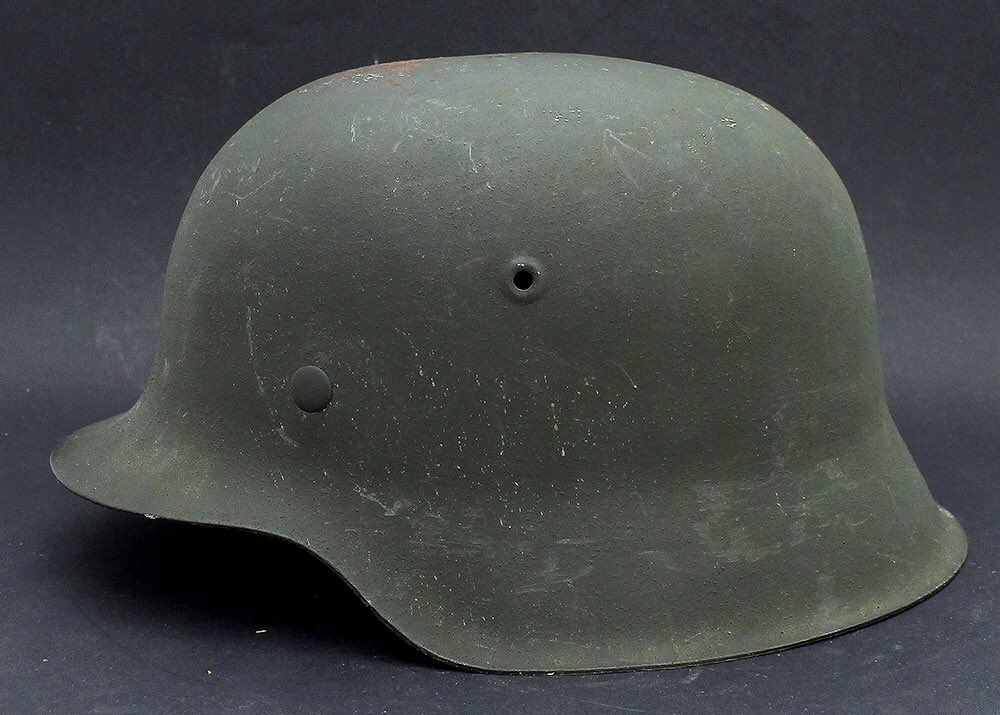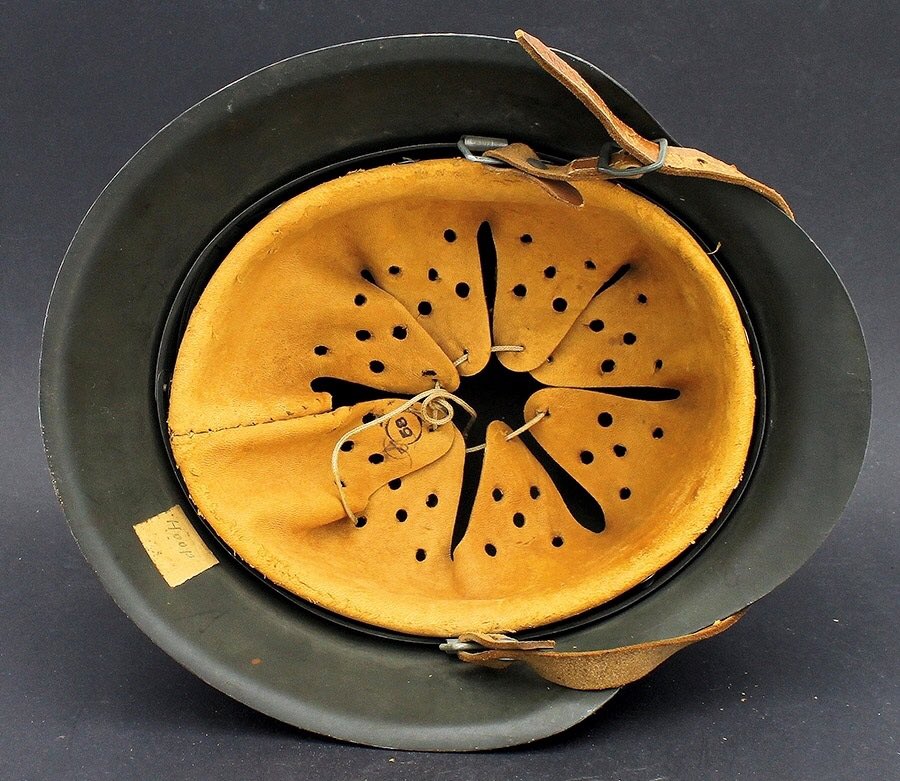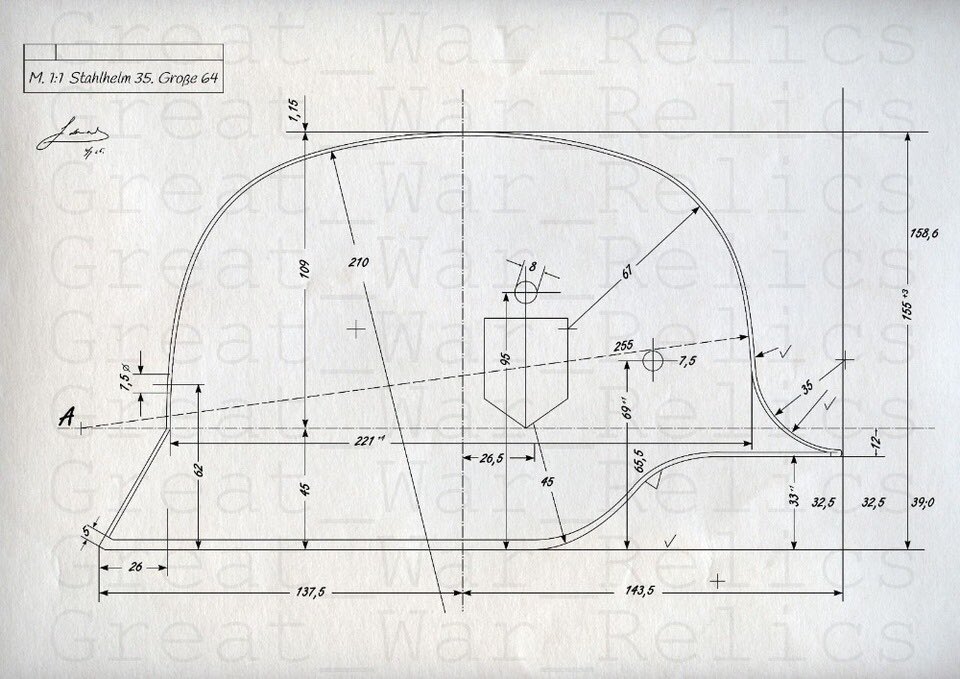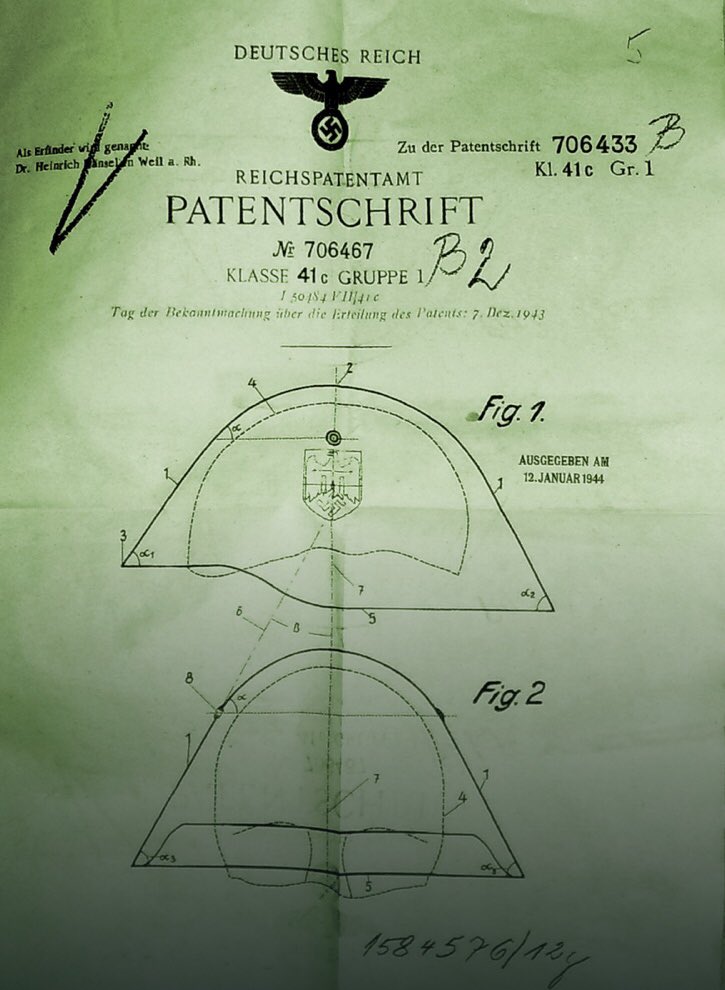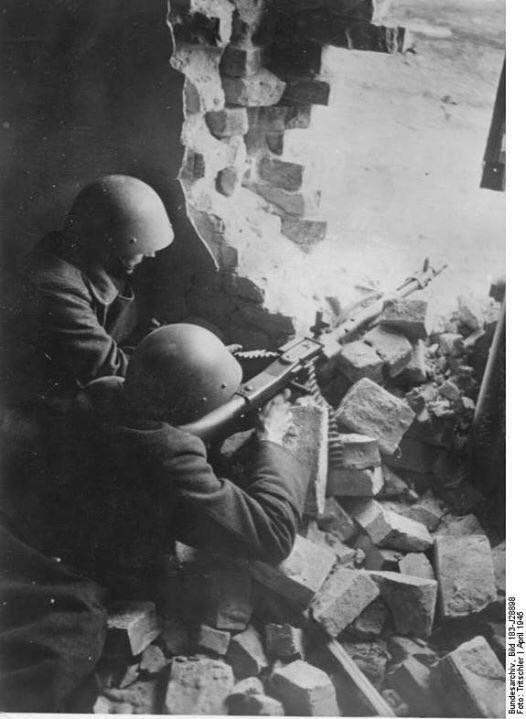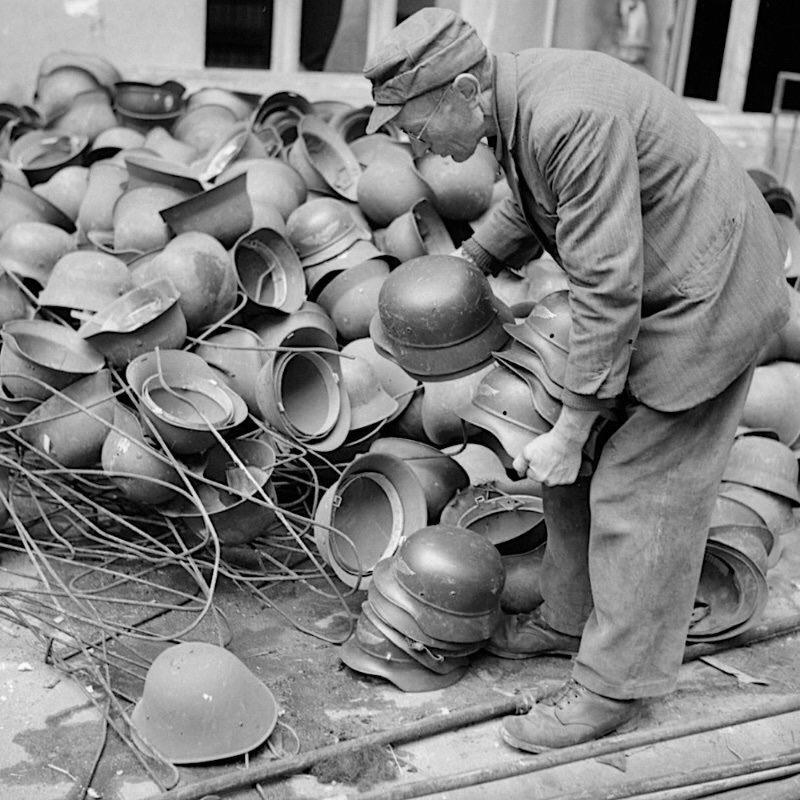The German Stahlhelm - Part 1
I’m going to do this about face, part 1 will focus on the most commonly used Stahlhelm of WW2 & its evolution.
Part 2 will look at how & why it was chosen, through WW1 & inter-Wars.
1)
I’m going to do this about face, part 1 will focus on the most commonly used Stahlhelm of WW2 & its evolution.
Part 2 will look at how & why it was chosen, through WW1 & inter-Wars.
1)
The first model, the M35, was introduced after completion of testing in June 1935 & announced via ‘General Army Correspondence’ no. 289.
Intended for protection against shrapnel & grenade fragments.
The lifespan was considered by the General Staff as an avg of 2 years.
2)
Intended for protection against shrapnel & grenade fragments.
The lifespan was considered by the General Staff as an avg of 2 years.
2)
Manufacturers of all upcoming models were;
Eisenhüttenwerke, Thale (ET), later CKL Eller (CKL)
Quist, Esslingen (Q)
Sächsische Emailler und Stanzewerke, Lauter (SE, later HKP)
Vereinigte Deutsche Nickelwerke, Schwerte (NS)
Emaillerwerke A.G., Fulda (EF)
3)
Eisenhüttenwerke, Thale (ET), later CKL Eller (CKL)
Quist, Esslingen (Q)
Sächsische Emailler und Stanzewerke, Lauter (SE, later HKP)
Vereinigte Deutsche Nickelwerke, Schwerte (NS)
Emaillerwerke A.G., Fulda (EF)
3)
The M35 was characterised by a smooth, matte grey paint finish, separate piece ventilation holes above the decals & 3 rivet pins (front right, left & rear) to secure the M31 liner.
Key was the addition of the Arm of Service decal on the left of the Stahlhelm.
4)
Key was the addition of the Arm of Service decal on the left of the Stahlhelm.
4)
On the right was the other authorised decal, the National colours shield.
The rim was rolled & beaded under the M35 to finish.
5)
The rim was rolled & beaded under the M35 to finish.
5)
Here we see the M31 aluminium liner band, secured by the 3 rivet pins, 8 finger perforated drawstring leather liner (for ventilation) & leather chinstrap attached & secured by buckles.
Note the rolled beaded rim folded beneath the Stahlhelm.
6)
Note the rolled beaded rim folded beneath the Stahlhelm.
6)
Following the outbreak of War & experience in the Poland campaign, Bulletin no.428 decreed that ‘slate grey’ paint be used, with the ‘exterior slightly roughened’.
This was in response to the glare that was prevalent on the previous paint finish.
7)
This was in response to the glare that was prevalent on the previous paint finish.
7)
Until the textured paint was in service, ‘troops are to use substitute materials for camouflage purposes (smearing the helmet with earth, clay etc). This does not apply to camouflage covers, netting or strapping’.
National colours symbol was withdrawn too on 21 March 1940.
8)
National colours symbol was withdrawn too on 21 March 1940.
8)
In addition, simplification was required to suit a Wartime industry, so the M40 Stahlhelm included the above measures with the ventilation holes now stamped, replacing the previous separate components. The crown was lowered slightly, too.
Arm of service decal was retained.
9)
Arm of service decal was retained.
9)
The M31 liner was strengthened with a steel, rather than aluminium band & a manganese steel became the shell.
The rolled, beaded rim was retained.
10)
The rolled, beaded rim was retained.
10)
The final incarnation was the M42, that retained the previous features, LESS the rolled, beaded rim & remaining Arm of Service decal. They ceased as per July/August 1942 respectively.
Paint included a variety of colour shades & sand to further mitigate glare reduction.
11)
Paint included a variety of colour shades & sand to further mitigate glare reduction.
11)
From as early as 1942, the Army Weapons Office had been pursuing research of another Stahlhelm, despite Hitler’s forbadence.
This was a result of high numbers of head wounds being borne by the Wehrmacht.
So by January 1944, amongst trials, the B2 was one example chosen.
12)
This was a result of high numbers of head wounds being borne by the Wehrmacht.
So by January 1944, amongst trials, the B2 was one example chosen.
12)
Eisenhüttenwerke, Thale - one of the influential & largest producers of Stahlhelm produced a small number, incl the model B, which were used by some Volkssturm/Hitler-Jugend units near the factory.
Here is the only photo I’ve seen of the B in use, differing from the B2.
13)
Here is the only photo I’ve seen of the B in use, differing from the B2.
13)
With that last Tweet I realise this late War evolution requires a thread of its own.
Hope you’ve enjoyed this intro-thread on the main Stahlhelm of WW2.
Separate inception & evolution threads to come.
Can you see it?
14/end)
Hope you’ve enjoyed this intro-thread on the main Stahlhelm of WW2.
Separate inception & evolution threads to come.
Can you see it?

14/end)
Thread Sources:
Text - History of the German Steel Helmet 1916-1945 Ludwig Baer
Pics - http://www.german-ww2-helmet.com/432654512
Text - History of the German Steel Helmet 1916-1945 Ludwig Baer
Pics - http://www.german-ww2-helmet.com/432654512

 Read on Twitter
Read on Twitter